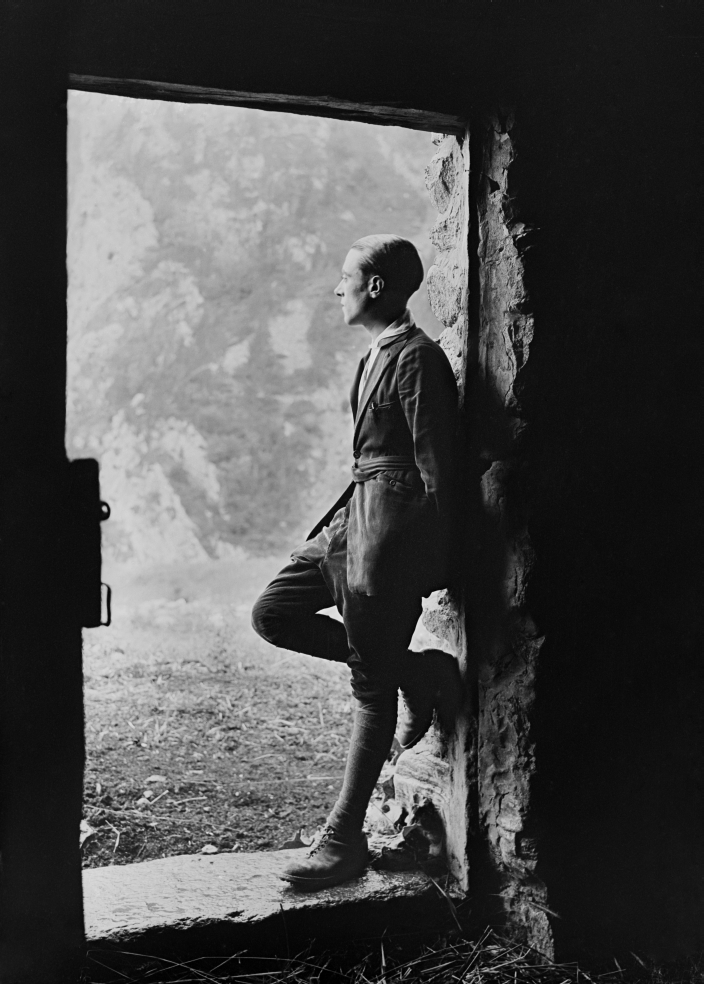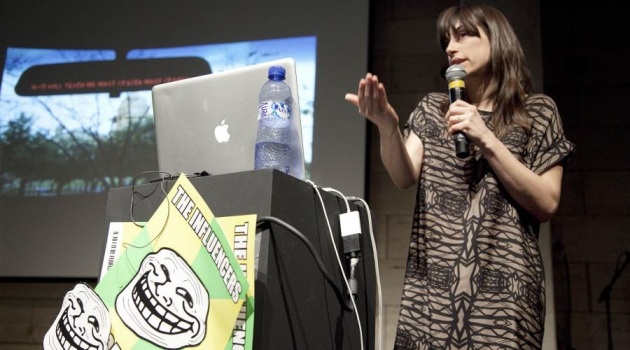Antoni Arissa. The Shadow and the Photographer
November 4th, 2014 Rafael Levenfeld i Valentin Vallhonrat No Comments Antoni Arissa Asmarats (Sant Andreu, 1900 – Barcelona, 1980) was one of the most prominent Spanish representatives of the photographic avant-garde, although his beginnings were influenced by the postulates of pictorialism which had deep roots in the Catalan and Spanish photography of those years. His position evolved towards an aesthetic that was close to the European New Vision. This change was fuelled, furthermore, by his career as a printer and his knowledge of typography and editorial development, where the photographer adapted numerous visual tools in search of a truly modern photography.
Antoni Arissa Asmarats (Sant Andreu, 1900 – Barcelona, 1980) was one of the most prominent Spanish representatives of the photographic avant-garde, although his beginnings were influenced by the postulates of pictorialism which had deep roots in the Catalan and Spanish photography of those years. His position evolved towards an aesthetic that was close to the European New Vision. This change was fuelled, furthermore, by his career as a printer and his knowledge of typography and editorial development, where the photographer adapted numerous visual tools in search of a truly modern photography.
During his first ventures as a photographer, in the early 1920s, he obtained his first prize in the magazine Criterium at the age of just 22 years. In 1924, he was awarded a prize by the Workers’ Civic Centre of Gijón and in 1925 he received the prize of honour at Figueres. He also won several international prizes and attended important exhibitions such as the II Exposition internationale d’Art Photographique in Saint Etienne, together with avant-garde authors such as Frantisek Drtikol and Jaromír Funke. By the year 1922, Arissa had founded – together with Josep Girabalt and Lluís Batlle – the Saint-Victor Photography Group, in the Sant Andreu neighbourhood in Barcelona, a year before the emergence of the significant Photography Group of Catalonia (Agrupació Fotogràfica de Catalunya).
In the early 1920s, the city of Barcelona showed us a photographic scenario where the pictorialism current was at the forefront in all activities, as in the rest of the country, and in a large part of Europe. Photographers had found their inspiration in the different artistic movements of the 19th century such as Pre-Raphaelitism, Arts & Crafts, and Symbolism. Their works were subjected to a range of manipulations through pigmentary and chemical procedures, which they qualified as noble.
In this early phase, in the years between 1922 and 1928, Arissa produced his first images, reflecting rural scenes from the environs of Sant Andreu. These were photographs organized as stagings, to recreate picturesque situations in real contexts.
In the early 1930s, Antoni Arissa completed the process of change in the way he conceived his photographic production. The peaceful scenes of the previous decade were now compressed, conceptualised, and reduced by a visual treatment closer to graphic components. Angulation, together with strong lighting, with increased light and shade, converted his photographs into conscious elements and into transforming tools that would allow him to add emotional accents.
In his visual adventure, Arissa would not need major monuments, nor journeys to remote places, nor majestic sceneries, nor famous figures. He found the spectacular in little things. Trivial personal belongings, and the shadows they project, would allow him to produce great images. Their importance lies in his highly personal vision.
 In 1935, the magazine Art de la Llum devoted a special issue to Antoni Arissa, coinciding with the exhibition held at the Exhibition Hall of the Catalanist People’s Centre of Sant Andreu.
In 1935, the magazine Art de la Llum devoted a special issue to Antoni Arissa, coinciding with the exhibition held at the Exhibition Hall of the Catalanist People’s Centre of Sant Andreu.
At the end of the Civil War, many of the tribunes for the dissemination of modernity disappeared and Arissa’s artistic activity, like that of many other creators of his generation, decreased notably as, gradually, he fell into oblivion. In the early 1990s, a small process began of recovering his figure at various exhibitions.
This anthological exhibition on Antoni Arissa aims to offer a journey through his photographic career, from the early 1920s to the Spanish Civil War, where he practically stopped photography to continue with his work as a printer and typesetter at his family’s printing press. This project represents the conclusion of a long process of consolidation and restoration of his main negatives, as well as the search for originals from the author’s era. Thus, the exhibition contains original images by the author sourced from different institutions, as well as current productions from recovered negatives by Arissa, which show what the works that have been lost must have been like.
Rafael Levenfeld and Valentí Vallhonrat are the curators of the exhibition Arissa. The shadow and the photographer, 1922-1936, that opens on November 14th at CCCB.
The Influencers. Ten years of unclassifiable ideas, on and off the information highways.
October 29th, 2014 Bani Brusadin No CommentsThe Influencers started as an experimental project in 2004, a now far-off age when YouTube was still non-existent and the remixing of popular culture was a complex practice that smacked of the underground. New artistic and activist ferments were emerging from the first wave of digital euphoria and the growing globalisation of ideas: mass culture, in turn evolving fast, swiftly became the target of ingenious experiments in subversion.
Ten years later, the scene is looking radically different. The explosion of the social networks has released unthinkable creative forces; the most complex digital technologies are now an everyday reality, even for people who resisted the most timid of analogical advances: new cultural, economic, and social models are threatening the traditional structures and consolidating new and more sophisticated hierarchies, material and symbolic alike.
In these last ten years, The Influencers has attempted to narrate these changes through the most meaningful and surprising projects on an international scene with no fixed discipline and in constant motion. It is in these turbulent waters where digital subcultures mix with new forms of activism, artistic experiments, and other adventures, in the least transited parts of the networks or of urban spaces.
The key element was always the experience in the first person of controversial project authors, who have narrated the ambiguities and opportunities of the constant consumption of images, the challenges of new forms of power based on the control of information, the taste for adventure and the paradox of a society that is increasingly controlled and self-controlling. Little by little, we have tried to also involve the public in these experiences, by way of workshops and experimental actions.
Beyond the tendencies of the moment, we have always been interested in forging a sensitivity capable of perceiving truly risky operations, both from an artistic and a social viewpoint. Occasionally we have made incursions into the past to search for affinities between different contexts and put into historical perspective the creative and political challenges that we are facing at present.
Ten years later, what possibilities for intervention in the symbolic fabric of society do these strange forms of creative action have? What stories, what imaginaria can overcome the noise of the information society or the toxins of the industrial production of entertainment? While we continue seeking the answers, we will be trying to keep these questions as open as possible.
The Influencers will be holding its tenth edition from 27 to 29 November at the CCCB










